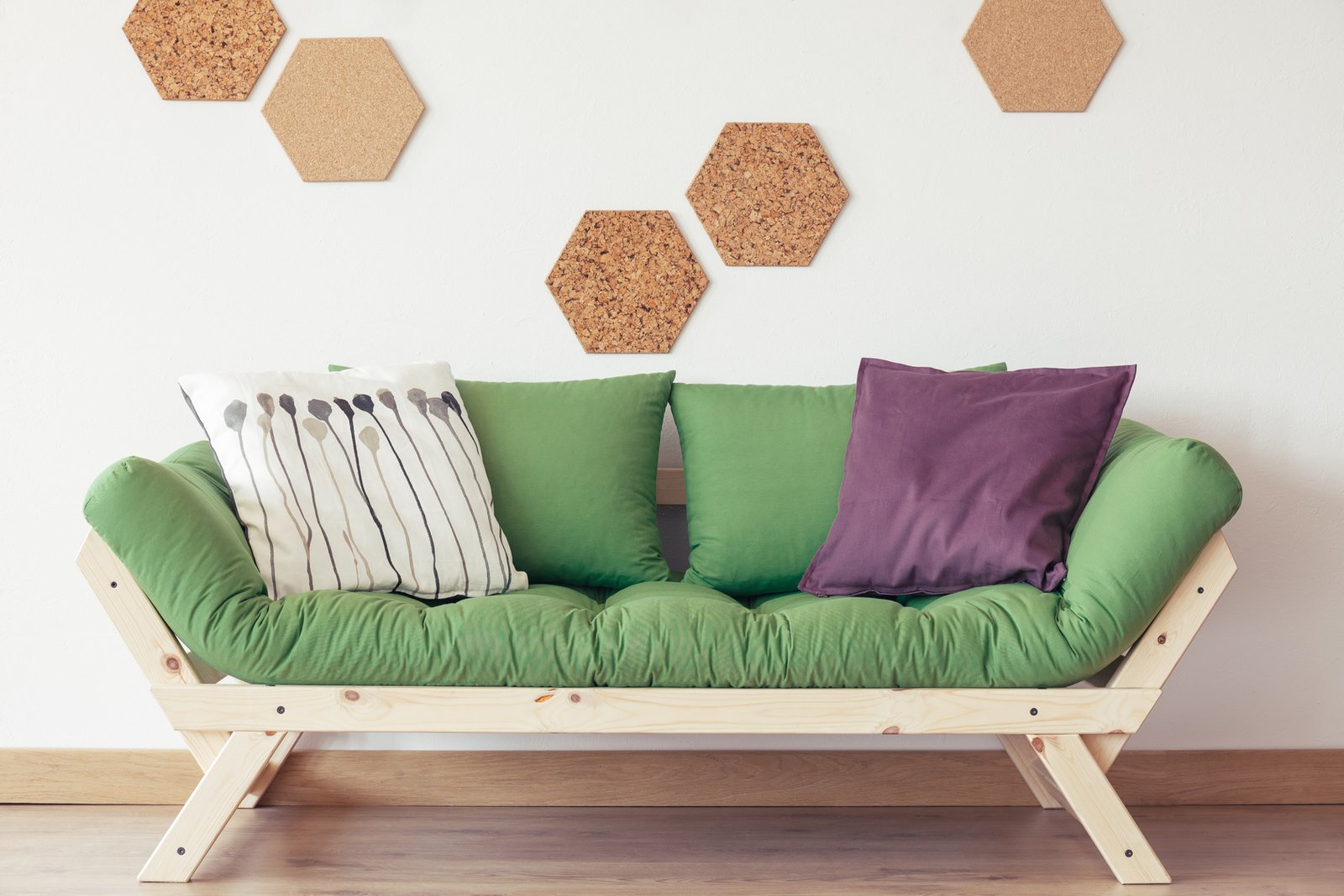What makes a sofa eco-friendly?

Choosing a good sofa is not an easy task. Since it is likely to be the most expensive piece of furniture in your living room and also the one that may stay with you the longest, it is important to think about good aesthetics, durability and environmental impact. In terms of environmental impact, understanding what goes into their construction and options available is the first step.
Although there is a great variety of sofas available on the market, most sofas are made of 4 basic components: frame, springs, cushions and fabric. In addition to that, there can be chemicals used in the production or assembly of these components. I will turn your sofa inside out to show you what it is made of and what to look for when choosing a beautiful and eco-friendly sofa.

Frame
The frame of your sofa is its skeleton, it is what gives it its basic size and shape. Sometimes this frame will be completely hidden and sometimes it will be in full view depending on the design. Traditionally, sofa frames are made of wood but there are also many examples of metal framed sofas. When choosing an eco friendly sofa you should favour the ones that have wood frames constructed from wood obtained from sustainable sources such as FSC and PEFC certified. If you prefer the look of a metal framed sofa you should favour the ones with high recycled metal content. Ideally this wood or metal should have been sourced locally as transporting materials over long distances is damaging both in terms of air pollution and excessive use of energy.

Springs
Springs will be part of the construction of the majority of upholstered sofas but not all types of sofas. They can be used on the seat and on the back and their fuction is to provide added comfort and increased resilience. If the type of sofa you are looking for includes springs then you should favour springs made of recycled steel. This will help avoid new metal being extracted from nature and all the environmental damage that this causes.
Cushions
Most sofas will have cushions or cushioned parts. These will be at the back, seat and/or arms. They will add comfort and softness to your sofa. In order to do this, cushions need some kind of filler. Nowadays, the most commonly used type of filling is polyurethane foam, which is a byproduct of petroleum. In addition to being an unsustainable material as it derives from non-renewable resources, its process of production releases toxic chemicals to the atmosphere such as isocianites which are poisonous. Polyurethane foam will also break down in small particles over time and its hazadous components will be found in the dust in your home and you may end up breathing it in. To top it up, it is highly flammable unless treated with flame retardants which are also very toxic to humans. Then why on earth is it even used? Because it is very cheap.

Fortunately, there are more healthy and sustainable alternatives, some of them have always existed and have been used since before the invention of polyurethane. The main alternative is natural latex (rubber) which comes from a renewable resource, a tree called Hevea Brasiliensis or rubber tree, normally produced through a sustainable planting and extracting system which guarantees continuous supply.
Before the invention of polyurethane natural latex was the main cushioning material, it is breathable, biodegradable and non-toxic, it lasts longer in addition to being mold and dust mite resistant. Look for products certified by the Global Organic Latex Standard (GOLS).
Other natural and healthy materials used for cushioning include feathers and blends of horsehair, wool and cotton.

Fabric
Finally, to cover the cushioning of your sofa and finish its look, some kind of fabric needs to be used. There are many options available for this purpose including syntethic and natural materials. If you want to have an eco-friendly sofa you should favour natural materials such as linen, wool and cotton. Look for sofas that use fabrics with Global Organic Textile Standard (GOTS) certification, these include natural and organic fabrics that will not contain any toxic chemicals such as formaldehyde and be kind to the environment and your health.

Choosing an eco-friendly sofa doesn’t need to be difficult. Remember to check the composition of the 4 main elements of the sofa: frame, springs, cushion and fabric. Information on these should be available in the products description and several manufacturers will provide you the option to use natural materials instead of synthetics. Enjoy your conscious decorating and Green It Yourself…Now!
Have any doubts or more information about eco-friendly sofas? Share with us below!
image 4 ecosofa, image 5 viesso







Reblogged this on Green Living 4 Live.
Thanks, much appreciated. Very nice posts there, I will read with much interest!